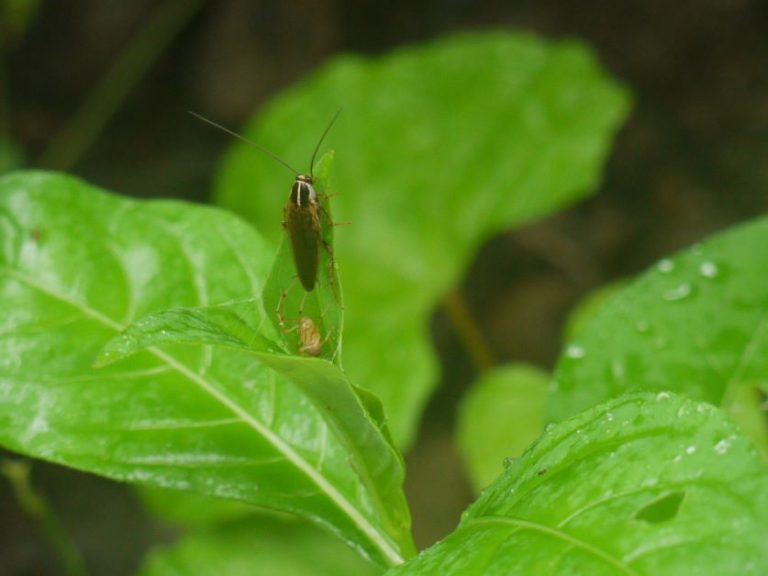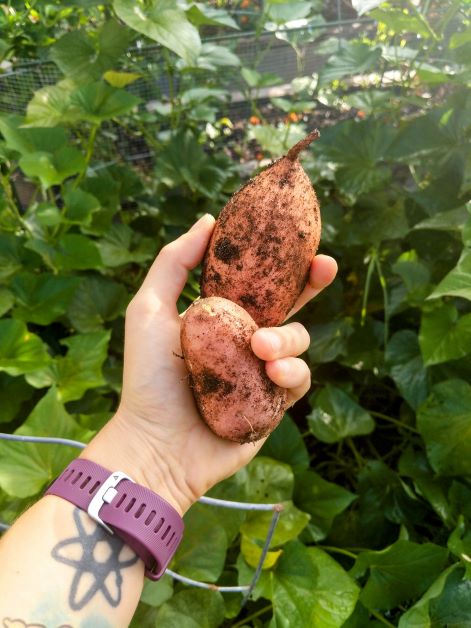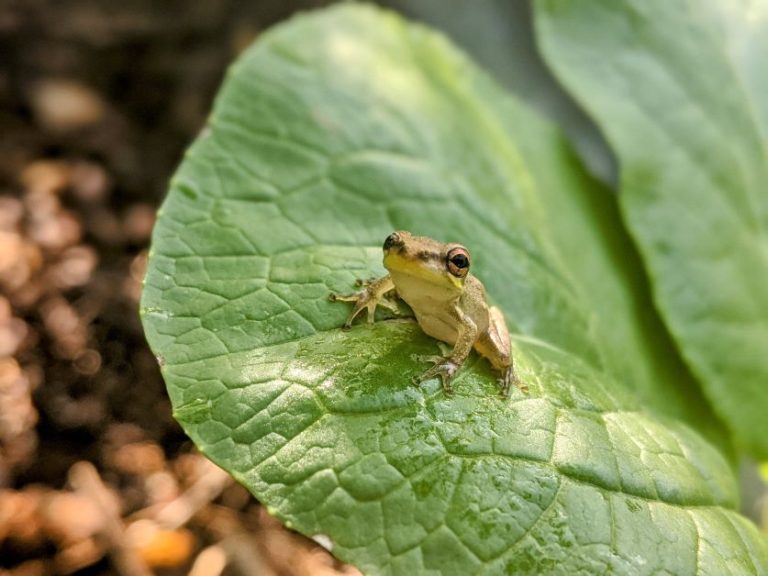How to Get Rid of Garden Slugs
 |
Slugs. They’re slimy. They’re gross. They’re hungry for your plants.
Florida is the perfect habitat for slugs – they love heat, humidity, and moisture. For us in the subtropics, getting slugs in the garden isn’t an “if”, but a “when.”
Fear not, fellow gardeners. We will fight these prehistoric pests, and we will win.
Know Your Enemy – Garden Slug Facts
Most slugs are hermaphroditic – they’re both male and female and can impregnate themselves. That means a single slug can be the source for an entire infestation.
Birds, frogs, turtles, toads, and even firefly larvae all eat garden slugs.
Slugs aren’t poisonous to humans, but they can carry parasites and viruses. Always wear gloves when handling slugs.
As invertebrates, slugs don’t have a brain. Instead, they have ganglia (groups of neurons) that control their body.
If you absolutely have to, yes you can eat garden slugs…but IT’S SUPER IMPORTANT THAT YOU COOK THEM THOROUGHLY. I’m serious. Eating raw slugs can cause a nasty case of meningitis. Snail trails can also cause meningitis, so always wash your produce before eating.
What Attracts Slugs to Your Garden?
Slugs will eat just about anything that’s green. They are especially attracted to lettuces, brassicas, and the tender leaves of starter plants.
What Does Slug Damage Look Like?
If you wake up one morning to find your entire crop of newly planted lettuce was mowed down overnight, you probably have a slug problem.
Garden slugs can devastate your garden in a short amount of time. If you see signs of a slug infestation, you need to work fast to stop them from getting out of control.
One tell-tale sign of a slug infestation are weird, scalloped-shaped chewing marks on the edges of your leaves. This damage is distinct and easy to spot.
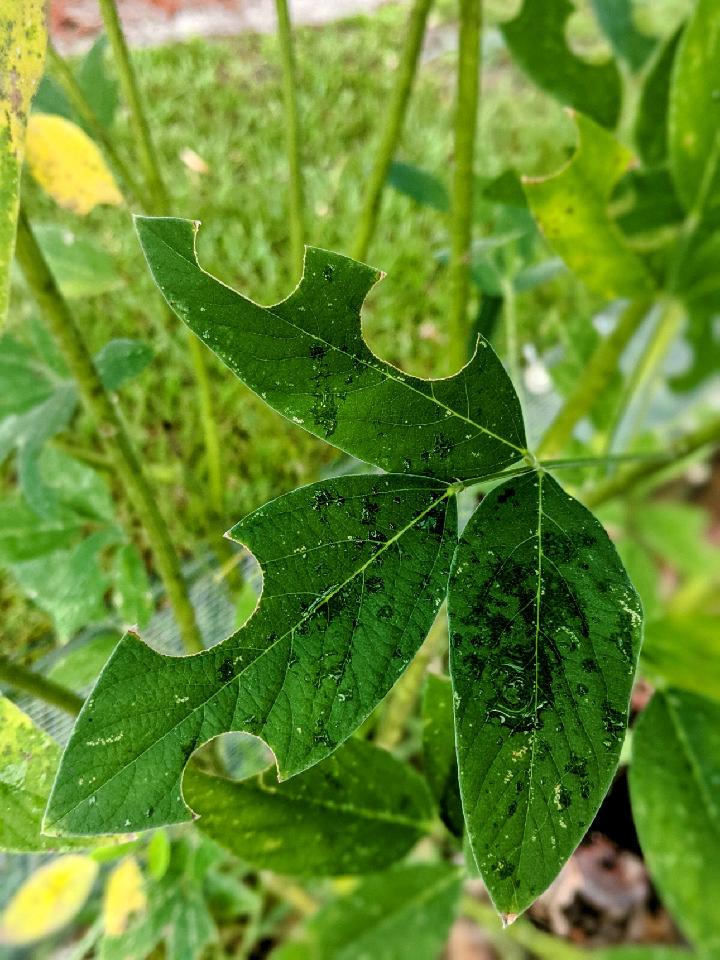 |
| Slug damage on pigeon pea plant |
Slugs can eat small plants down to the stem, or you may find irregularly shaped holes in the middle of your larger leaves.
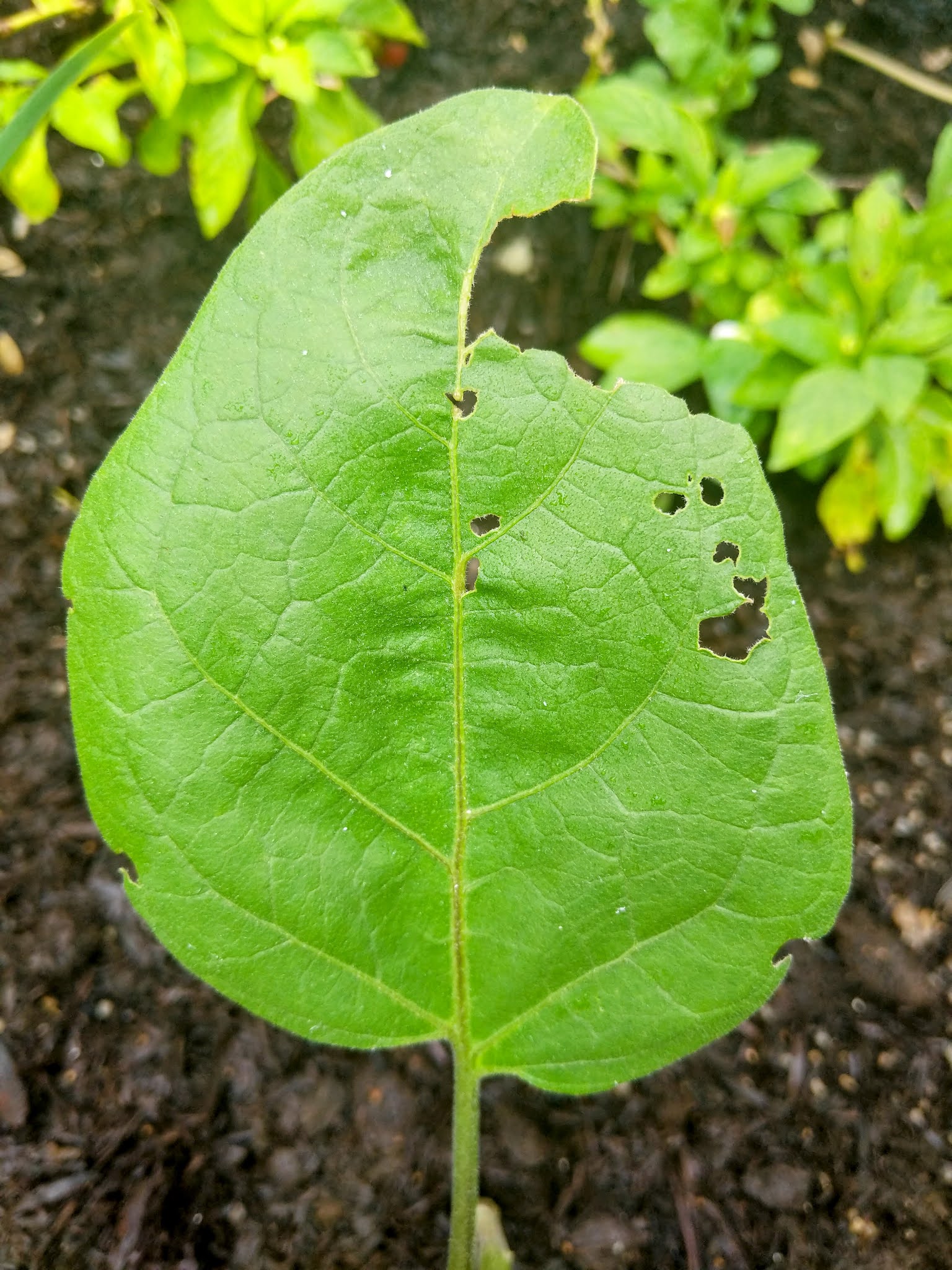 |
| Slug damage on eggplant leaf |
You’ll sometimes find slime trails around your garden beds or across foliage.
Keep an eye out for slug eggs. Garden slugs lay their eggs on your soil and plants. They look like gelatinous blobs, kind of like the tapioca pearls you get in Boba tea.
Using tweezers, pick out any slug eggs that you find out of your garden, put them in a Ziploc bag, and throw them away.
Prevention
Keep it Tidy
As with most pests, the best defense against garden slugs is prevention. Slugs are most active at night and hide in damp, dark areas during the day.
Keep your grass short and your garden area tidy – don’t give the slugs the opportunity to hide in long grass or under clutter.
Check under pots and containers and keep your containers away from the beds – the same logic as above applies here. Slugs like to hide under containers. If you have a container garden along with a raised or in-ground bed, keep the areas separate.
To help dry things out, rake over your mulch when it gets overly wet or compact.
Anti-Slug Watering Schedule
Water your garden in the morning so that it has a chance to dry out during the day. Watering at night is just asking for slug problems.
Strategic Plant Placement
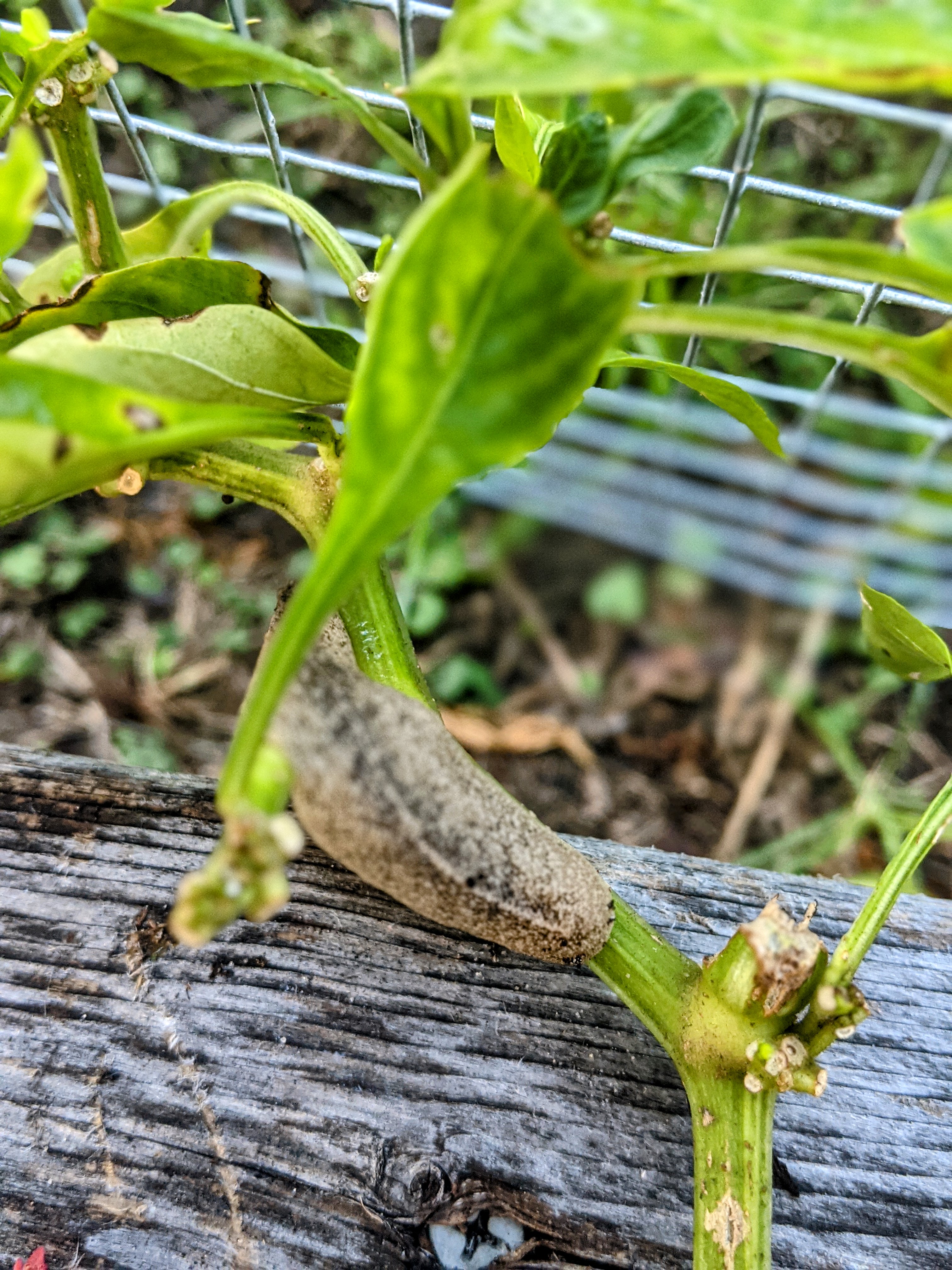 |
| Slug on a struggling pepper plant |
Let’s say that you’re planting lettuce and broccoli in the same bed. We already know that slugs love both of these crops and may decide to show up for a nightly feast.
We also know that broccoli is tougher than lettuce and has thicker leaves. They can take more of a beating than lettuce.
Put the broccoli on the edges of your garden bed and put the lettuce in the middle. Slugs move slowly, so it’s not likely that they’ll be able to eat the broccoli and also make it to the lettuce in one night.
With luck, the damage they do to the broccoli will be minimal and it’ll give you enough time to take action against the infestation.
Choosing the Right Time to Plant Your Starters
Give your baby plants the best chance at life by letting them get as big as possible inside their seed trays before moving them out to your beds. They’ll be hardier and hopefully less enticing to the garden slugs.
Physical Barriers
Deter the garden slugs by putting physical barriers along the perimeters of your bed. Spiky stuff like pine cones and brambles are good options.
 |
| Old copper stripping on my bed |
The theory is that slugs are reactive to copper because of the mucus they secrete, which means the slug will get a little zap when they inch over the copper strip.
I lined the outside of one of my beds with copper stripping and although it seemed to help, the copper strips were expensive and annoying to attach.
It’s also hard to tell how effective the copper was since I was using every anti-slug weapon in my arsenal at the same time I was using the copper strips.
If you want to try copper as a slug deterrent then hey, knock yourself out. Be sure to get strips in the right width, and buy a lot – you’ll have to replace them every season because they corrode. As soon as there’s a layer of corrosion on top, they won’t work anymore.
Garden Slug Attack Strategies
How to Build Garden Slug Traps
If you find yourself in a war with garden slugs even after all that prevention, it’s time to shift into attack mode.
Trapping is effective in combating garden slugs. There a couple ways to build a slug trap.
Wet some soil in your garden bed. Pick a spot that is attracting the slugs, like next to your lettuce.
Then, take a piece of cardboard or wood and put it on top of the damp spot. Leave it overnight.
Check under the cardboard or wood the next morning and chances are you’ll find some garden slugs hiding underneath. With a gloved hand, grab them and throw them away.
Slugs are also raging alcoholics, so lure them in with beer.
Take a bowl and fill it with some beer. Any swill will do. Bury it partway into your garden bed so that the soil and the lip of the bowl are level.
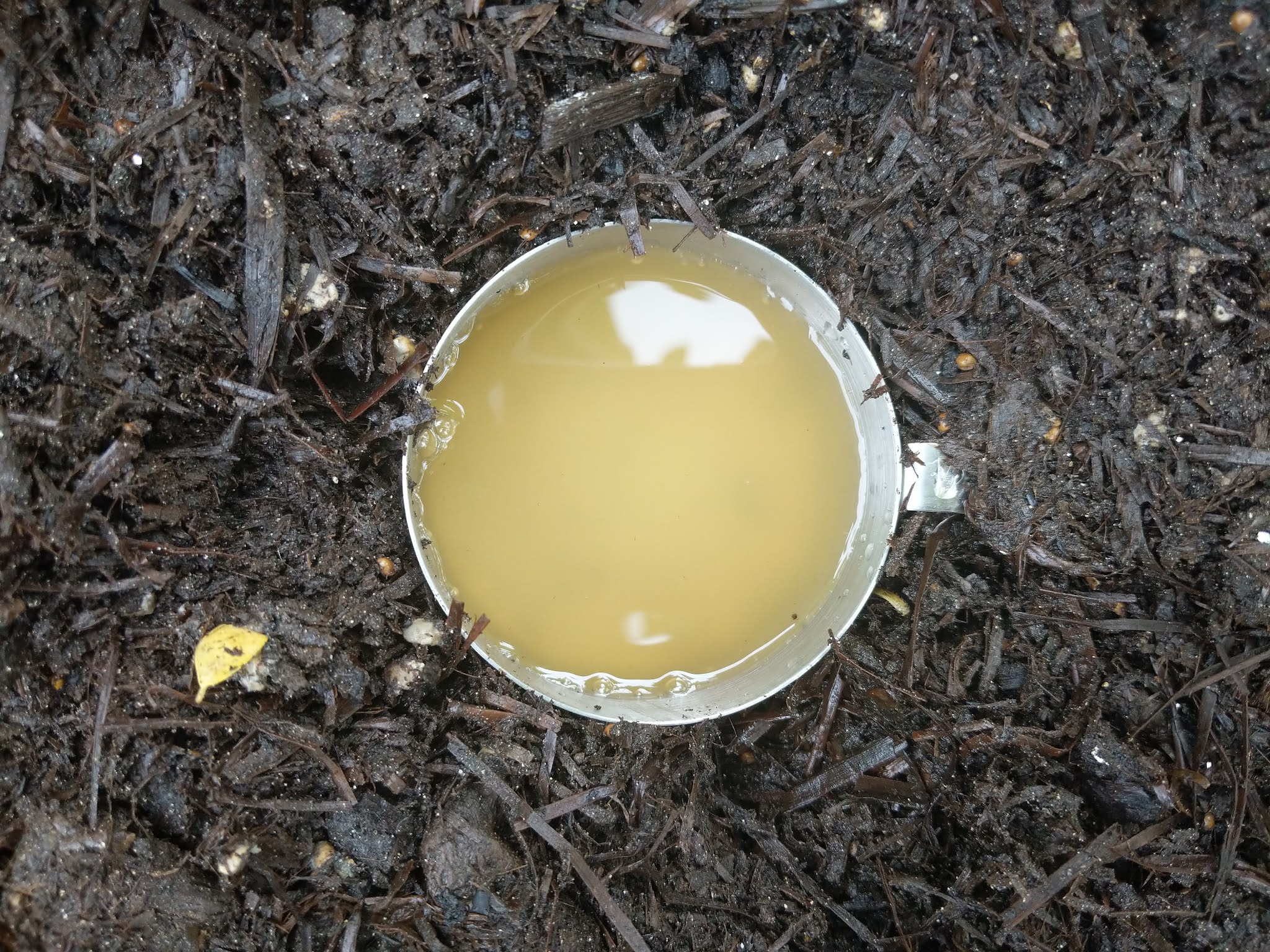
Overnight, the slugs will inch their way to the beer bowl and will fall in. Throw the slugs away in the morning.
You can also go outside at night with a flashlight and pick them out by hand. Be sure to check under the leaves – these sticky buggers can hang upside-down with the help of their slime coat.
Slug Pellets
Most store-bought slug treatments come in pellet form. There are two main types: those made with metaldehyde and those made with iron phosphate.
Stay away from metaldehyde pellets; they are very poisonous. This is an old-school chemical – yeah, it’s effective in killing slugs. And children, wildlife, and pets. Advances in slug-killing technology have allowed us to move away from using this dangerous chemical in the garden.
Iron phosphate is a newer form of slug pellet and is considered non-toxic. Some gardening blogs say that iron phosphate isn’t as effective as metaldehyde, but this information from Oregon State University says otherwise.
As a last resort, I’ve used Sluggo and it did help me get a handle on a slug infestation. I used Sluggo in conjunction with all the methods I’ve discussed above and now I rarely see slugs in my garden.
Disclaimer : I get commissions for purchases made through links in this post.

